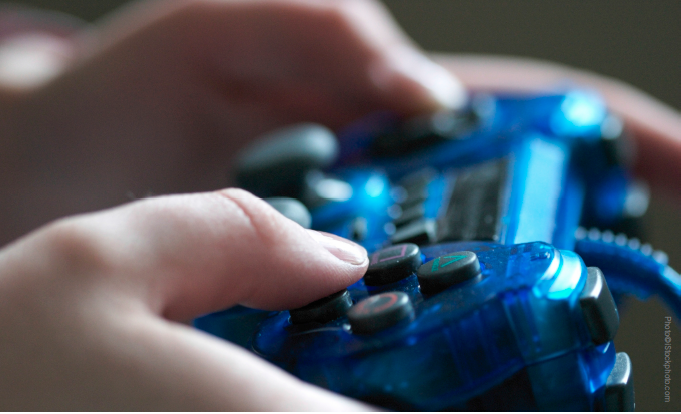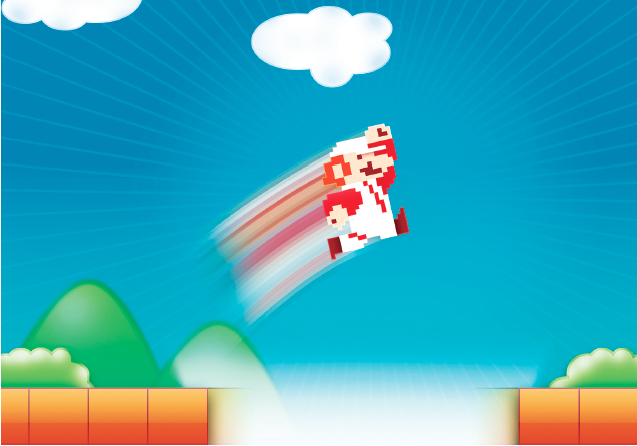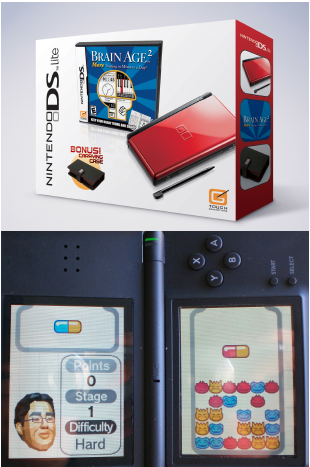Cognitive health and new technologies
Are you ready to prescribe videogames?
Abstract
In the face of a growing incidence of cognitive decline there is a need for sustainable lifestyle interventions to support, maintain and improve cognitive health. Perhaps serendipitously or intentionally technological evolution delivers a novel medium for cognitive training filled with promise and new potential. This medium is the realm of virtual reality, video games and mobile devices that allow for the development of individualized training regimes tailor made to suit the patients’ needs, not to mention a virtual intelligence that may be able to preserve that which the brain can no longer contain. This review explores the research behind the application of video games to cognitive exercise, rehabilitation programs encompassing virtual realities and smart phones dedicated to maintaining access to faculties challenged by the progression of Alzheimer’s disease. The limitations and challenges of these interventions will be explored as well.
Introduction
As the baby boomers continue to age, the incidence of mild cognitive decline, as well as Alzheimer’s disease (AD) and dementia, is expected to rise (Park 2003). Currently the prevalence of Alzheimer’s disease is 1% in persons 60-70 years of age and 6-8% in those over 85 (Mayeux 2010), while the prevalence of mild cognitive impairment is 10-20% in the 65 and older population (Petersen 2011). There is a growing need for lifestyle interventions that are effective, economically sustainable and compliance-friendly.
Some of the early signs of cognitive decline can include mild memory loss, mild reduction in reasoning, processing speed, and executive function, such as attention, language, and visuospatial skills (Deary 2009, Petersen 2011). These may be a result of normal aging (age-associated cognitive decline), mild cognitive impairment (slightly more significant cognitive decline than that of normal aging) as well as more serious causes such as Alzheimer’s disease, hypothyroidism, vitamin B12 deficiency, cerebrovascular disease (i.e. vascular dementia), central nervous system infection, hydrocephalus, cancer, substance abuse, adverse effects of medications, HIV related cognitive disorder and others (Mayeux 2010). A reduction in verbal memory and executive function, coupled with reduced retention of newly acquired information are more indicative of Alzheimer’s disease, while memory loss associated with psychosis is more characteristic of dementias (Mayeux 2010).
A reduction in verbal memory and executive function, coupled with reduced retention of newly acquired information are more indicative of Alzheimer’s disease, while memory loss associated with psychosis is more characteristic of dementias (Mayeux 2010). As computers and mobile devices become more mainstream, their application to cognitive health may offer a novel intervention that is inexpensive and customizable, able to address individual needs of patients. Evidence from a recent prospective study correlates the use of daily computers with 30-40% lower risk of dementia (Almeida 2012). Healthy men, 5506 participants 69-87 years of age, were followed for six years, with the primary outcome documented being the diagnosis with dementia. Computer use included browsing the internet, e-mail, word processing and playing games. Though there may be a range in the degree of benefit from computer use, potentially dependent on quality of content viewed, one simple factor that does seem to have an effect is experience. Comparing the functional MRI recordings of experienced users with those not familiar with the internet, Small et al (2009) found that the regular use correlated with activation of brain areas associated with decision making and complex reasoning, while naive internet browsing resulted in activation of areas associated with reading only. Thus there is some evidence to support the use of computers in the elderly population as a means to promote cognitive health. This review will examine a few computer based interventions and their impact on cognitive function as well as their respective limitations.
Video Games
A systematic review by Kueider et al (2012) provides an excellent overview of the terrain of video games and their current potential. Eight studies (participants ages 50-87) were examined and their impact on cognition compiled. Some of the games included were Nintendo Wii’s Big Brain Academy, Rise of Nations, Medal of Honor, Pac Man, Donkey Kong, Tetris, Atari: Break out, Crystal Castles, Galazian, Frogger, and Kaboom. These were played between two to 11 weeks for two to five hours each week. The biggest improvements were made in reaction time (effect size of 0.77; in this case the closer the effect size is to 1.0 the stronger the effect), processing speed (0.72) and global cognition (0.69). Global cognition was evaluated using the WAIS-R full IQ and ADAS-Cognition. A milder impact was made on executive function (0.25) and attention (0.21). The degree of impact varied across the different games examined. Except for Brain Academy, none of the above mentioned games focus on improving cognitive function.
Contradictory to popular belief games stereotypically seen as “intellectual” do not necessarily yield cognitive improvements, as demonstrated by study by Boot et al (2013). Healthy participants (mean age 74yo) randomized to play 60 hours of Brain Age 2 (intellectual game) or Mario Kart (action game) were assessed using a battery of cognitive tests including flanker test (selective attention), meaningful memory, Raven’s matrices (reasoning), visual search (processing speed) and others. No significant changes were reported after 12 weeks for either game.
To determine which game type offers the most cognitive benefit Oei et al (2013) compared several different types of games in the undergraduate student population. Seventyfive participants were randomly assigned to one of the five games: memory matrix (reproduce a sequence), The Sims (life simulation), action (first person shooter), match-3 (Bejewelled 2), or hidden-object (find object within a complex visual scene). They were instructed to play for one hour/day, five days per week for four weeks (20 hours total). They were assessed using a wide array of cognitive tests pre and post the games intervention. The tests included attentional blink, filter task, visual search/spatial memory and complex span. The action game resulted significant improvement in attentional blink (p<0.001). Authors speculate this to be due to the need to rapidly switch attention between targets, specific to the nature of action games, which results in improved attention switching transferrable to tasks outside the game. The action game also resulted in improvements in filter task, the ability to track multiple objects simultaneously, and complex span, a combination of arithmetic and verbal memory tasks, while Bejewelled-2 yielded positive results on visual search/ spatial memory and complex span. Memory matrix and hidden-object were beneficial for visual search/spatial memory only, while the Sims did not make a significant impact on any of the four parameters. Thus it would seem that the action game offers to most broad benefit, though some cognitive benefit can be extracted from the other games as well.
Virtual Training
Though potentially less entertaining than video games, virtual reality (VR) training programs designed to improve specific skills are delivering effective interventions to both healthy elderly participants and those suffering with Alzheimer’s disease. A study by Optale et al (2010) demonstrated positive effect of VR training on several cognitive parameters in healthy elderly population. The randomized control trial enrolled 36 participants (mean age 80yo) with various degrees of impairment on the Verbal Story Recall (VSR) test into control (music therapy) and experimental groups. The experimental group received three training sessions every two weeks consisting of auditory training; listening to an audio recording of three different stories with three different musical backgrounds, and VR training; finding the correct path to a viewing location of a 15 second film clip, using a joystick and computer while listening to the same background music as used in the audio training. The training was delivered for three months. The training resulted in significant improvements in Mini Mental State Examination (MMSE) (p=0.014), Digit Span test (short term verbal memory; p=0.043), VSR (p<0.001), Phoenemic Verbal Fluency (p=0.005), Geriatric Depression Scale (p=0.025), while the control group either maintained or demonstrated loss of function. No changes were observed in visuospatial processing and activities of daily living.
Using VR as a safe and controlled training environment, Hofmann et al (2003) created a shopping intervention to improve daily living function of patients with AD. The VR experience was created using digital photographs of the shopping route, which the participants were required to navigate in order to locate the shop, buy three items and answer 10 relevant multiple choice questions, such as “you will have to cross this road to get to the pharmacist. What do you have to keep in mind?”. After 12 sessions over four weeks, a significant reduction in the number of mistakes made (p<0.044) was documented, which was sustained for three weeks following the training. No impact on the MMSE was observed. While the study demonstrated ability to improve specific skills, it is difficult to conclude how generalizable these gains are to real-life shopping experience, as well as the duration of their perseverance past the three week follow up.
Other ways of applying new technologies
As the world of games and virtual realities continues to evolve, so does the world of applications. A case study by De Leo et al (2011) capitalized on the photographical capacity of the smart phone and developed what could be termed as virtual memory for a patient with Alzheimer’s disease. The participant was diagnosed with stage 4 Alzheimer’s disease (according to Functional Assessment Staging (FAST)) and was given a programmed smart phone, which he wore around his neck for four weeks. The phone was programmed to capture pictures every five minutes between 8:00am and 8:00pm. The images were uploaded automatically to a server at 2am each night. Redundant and poor quality images were discarded by the research team, and the rest were made into a slideshow, which the participant viewed once a week. A recent events memory recall test was administered before and immediately after viewing the video, along with a five-point Likert scale satisfaction questionnaire. Not surprisingly there were more events remembered with the slideshow than without. Though the participant did not agree that the slideshow was a very useful tool as memory aid, he did agree that it made him feel less anxious knowing that it was keeping a record, especially in social situations where he was concerned about forgetting who he has met. Being able to share the experiences with family through the slideshow was an added pleasure. The device did not pose an inconvenience to the participant but did present with some technological problems and dependency on a video editor to sort through the slideshow.
Another approach to creating a virtual memory is currently in the process of being piloted. Donnelly et al (2008) developed a Cell-Phone-Based-Video Streaming System to provide routinely scheduled reminders to patients with dementia as a way to assist with daily activities. By using familiar faces of relatives, the authors hope to achieve higher compliance. Another potential application of the smart phone is the use of the GPS component as way of locating patients with Alzheimer’s disease that become lost (De Leo 2011). The application of the Wii is another area that can be explored, as well as the social benefit and cognitive impact of the virtual online communities, such as Facebook, online dating and Skype.
Challenges and Limitations
There were two main obstacles identified in the literature with respect to these new technologies. The first and most familiar is the challenge of compliance. Boot et al (2013) explored participant preferences in a study comparing two different Nintendo DS game interventions. Participants (mean age 74yo) were randomized to play 60 hours of either an action game, Mario Kart DS, or a more intellectual game, Brain Age 2, which included choice of several different games including Sudoku. Participants rated the intellectual game more enjoyable and were more compliant with the prescription (56 hours on average were played of Brain Age 2 compared to 22 hours of the Mario Kart). They described the Mario Kart as “mindless” and “utterly boring”. Ironically, according to the research (Boot 2013, Oei 2013), it is the action games that offer the most benefit with respect to executive function and reaction speeds. The other concern is the adverse events associated with the ergonomics of computers. Some of the reported side effects of desktop monitors, joysticks and keyboard use included eye strain and arthritis (Boot 2013), while use of head-mounted visual displays, typically used to create virtual realities, resulted in nausea, vomiting, dizziness, headaches, disorientation and transient vestibular and psychomotor disturbances (Cherniak 2011). Another complication though not discussed in detail in the literature, but very familiar to us all, is the frustration of technological limitations in the forms of hardware and software malfunctions. Despite these challenges, a systematic review by Kueider et al (2012) reports that participants do not need to be technologically savvy in order to enjoy all the benefits that these intervention have to offer with respect to cognitive health.
Conclusion
As the technological world continues to evolve it may offer new tools and approaches that may aide in the maintenance of cognitive health and in the rehabilitation of various cognitive impairments. Individual needs and preferences will become crucial in the development of efficacious video games and virtual realities, which will not only need to stimulate the cognitive functioning but maintain interest and intrigue the participant, ideally while connecting them to a strong and supportive social network.
References:
Almeida OP, Yeap BB, Alfonso H, Hankey GJ, Flicker L, Norman PE. Older men who use computers have lower risk of dementia. PLoS One. 7(8) (2012)
Basak C, Boot WR, Voss MW, Kramer AF. Can training in a realtime strategy video game attenuate cognitive decline in older adults? Psychology of Aging. 23(4) (2008); 765-77
Boot WR, Champion M, Blakely DP, Wright T, Souders DJ, Charness N. Video games as a means to reduce age-related cognitive decline: attitudes, compliance, and effectiveness. Front Psychology. 4(31) (2013)
Cherniack EP. Not just fun and games: applications of virtual reality in the identification and rehabilitation of cognitive disorders of the elderly. Disabil Rehabil Assist Technology. 6(4) (2011); 283-9
Cohen GD, Firth KM, Biddle S, Lloyd Lewis MJ, Simmens S. The first therapeutic game specifically designed and evaluated for Alzheimer’s disease. Am J Alzheimer’s Dis Other Demen. 23(6) (2008): 540-51
De Leo G, Brivio E, Sautter SW. Supporting autobiographical memory in patients with Alzheimer’s disease using smart phones. Applied Neuropsychology. 18(1) (2011); 69-76
Deary IJ, Corley J, Gow AJ, Harris SE, Houlihan LM, Marioni RE, Penke L, Rafnsson SB, Starr JM. Age-associated cognitive decline. Br Med Bull. 92 (2009); 135-52
Donnelly MP, Nugent CD, Craig D, Passmore P, Mulvenna M. Development of a cell phone based video streaming system for persons with early stage Alzheimer’s disease. Conf Proc IEEE Eng Med Biol Soc. 2008; 5330-3
Hofmann M, Rosler A, Schwarz W, Muller-Spahn F, Krauchi K, Hock C, Seifritz E. Interactive computer-training as a therapeutic tool in Alzheimer’s disease. Compr Psychiatry. 44(3) (2003): 213-9
Kueider AM, Parisi JM, Gross AL, Rebok GW. Computerized cognitive training with older adults: a systematic review. PLoS One. 7(7) (2012)
Mayeux R. Clinical practice. Early Alzheimer’s disease. New England Journal of Medicine. 362(23) (2010): 2194-201
Oei AC, Patterson MD. Enhancing cognition with video games: a multiple game training study. PLoS One. 8(3) (2013)
Optale G, Urgesi C, Busato V, Marin S, Piron L, Priftis K, Gamberini L, Capodieci S, Bordin A. Controlling memory impairment in elderly adults using virtual reality memory training: a randomized controlled pilot study. Neurorehabilitation Neural Repair. 24(4) (2010); 348-57
Park HL, O’Connell JE, Thomson RG. A systematic review of cognitive decline in the general elderly population. Int J Geriatric Psychiatry. 18(12) (2003): 1121-34
Petersen RC. Clinical Practice. Mild Cognitive Impairment. New England Journal of Medicine. 364(23) (2011): 2227-34
Small GW, Moody TD, Siddarth P, Bookheimer SY. Your brain on Google: patterns of cerebral activation during internet searching. Am J Geriatr Psychiatry. 17(2) (2009); 116-26











